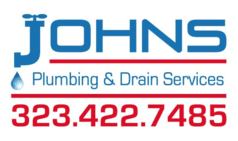Los Angeles homeowners have two primary options to manage household wastewater – connect to the municipal sewer system or install an on-site septic system. Each option offers unique benefits and requires distinct levels of maintenance, making it crucial for homeowners to understand the differences between these two wastewater management methods. As a trusted provider of residential and commercial plumbing services in Los Angeles, CA, John’s Plumbing & Drain Services is here to help you better comprehend the distinctions between sewer lines and septic systems, ensuring you can make informed decisions about your home’s plumbing and wastewater management needs.
In this informative article, we will explore the key differences between sewer lines and septic systems, focusing on their functions, installation requirements, maintenance obligations, and advantages. With this information, you’ll be well-equipped to assess which option is best suited for your Los Angeles home, and you’ll know when to contact professional plumbers like the team at John’s Plumbing & Drain Services for the necessary system maintenance and repairs.
Sewer Lines vs. Septic Systems: Functions and Components
1. Sewer Lines
Sewer lines connect your home’s plumbing system directly to the municipal sewer system, which handles waste treatment and disposal. Wastewater flows from your home through a series of underground pipes until it reaches a sewage treatment facility. The treatment process involves removing solid waste, treating the water, and ultimately discharging it back into the environment. Sewer lines are typically used in urban and suburban settings where municipal infrastructure is readily accessible.
2. Septic Systems
A septic system is an independent, on-site wastewater treatment system that is common in rural areas where municipal sewer connections are unavailable. In a septic system, wastewater exits your home through a single pipe and flows into a septic tank where solid waste settles and bacteria break down the organic material. The clarified liquid then moves to a drain field, where it percolates into the soil to naturally remove harmful bacteria and viruses.
Installation and Initial Costs
1. Sewer Lines
Connecting to a municipal sewer system typically requires coordination with local authorities and adherence to specific regulations. The installation process may involve trenching, pipe installation, and connection fees charged by the municipality. While sewer line connection costs can vary, homeowners are usually responsible for the expenses related to connecting their homes to the nearest sewer line.
2. Septic Systems
Installing a septic system involves multiple steps, including site evaluation, percolation tests, system design, and obtaining necessary permits. Installation costs can vary significantly depending on the type and size of the system, as well as the local soil conditions. In general, septic system installation tends to be more expensive than connecting to a municipal sewer line.
Maintenance and Long-Term Costs
1. Sewer Lines
Sewer line maintenance is typically the responsibility of the local municipality, which means homeowners are not directly responsible for the upkeep of the larger sewer system. However, homeowners must maintain the sewer line connection from their home to the nearest main sewer line. This may involve occasional cleaning and inspection to prevent blockages caused by tree roots, grease buildup, or debris. Unforeseen issues, such as damaged pipes or blockages, can result in costly repairs for homeowners.
2. Septic Systems
Septic systems require regular maintenance to function properly, including routine inspections and pumping out the tank every 3-5 years or when needed. Neglected maintenance can lead to system failure, resulting in costly repairs or even complete system replacement. While regular maintenance costs of a septic system can be higher than those for a sewer line connection, homeowners do not pay monthly sewer fees.
Advantages and Considerations
1. Sewer Line Connections
Some advantages of connecting to a municipal sewer system include reduced maintenance responsibility and the convenience of a single sewage bill. On the other hand, sewer fees can vary based on local rates, and sewer connections may be subject to additional fees, such as those for system expansions or improvements.
2. Septic Systems
Septic systems offer homeowners greater control over their wastewater treatment and, in some cases, can be more environmentally friendly than municipal sewage treatment plants. However, the reliance on regular maintenance and proper system operation can pose challenges for some homeowners.
Conclusion
Understanding the differences between sewer lines and septic systems is essential for Los Angeles homeowners in determining the most suitable wastewater management option for their property. By considering the functions, installation requirements, maintenance obligations, and advantages of each system, you can make an informed decision that best meets your needs and preferences. When it’s time to service or update your home’s wastewater management system, trust the experts at John’s Plumbing & Drain Services to provide the knowledge and services needed for efficient and effective plumbing solutions.
Looking to evaluate or update your Los Angeles home’s wastewater management system? Trust the experts at John’s Plumbing & Drain Services to provide you with the knowledge and services necessary to ensure efficient and effective plumbing services in Los Angeles. Contact us today to schedule a consultation and learn more about our comprehensive range of sewer line and septic system services.

















